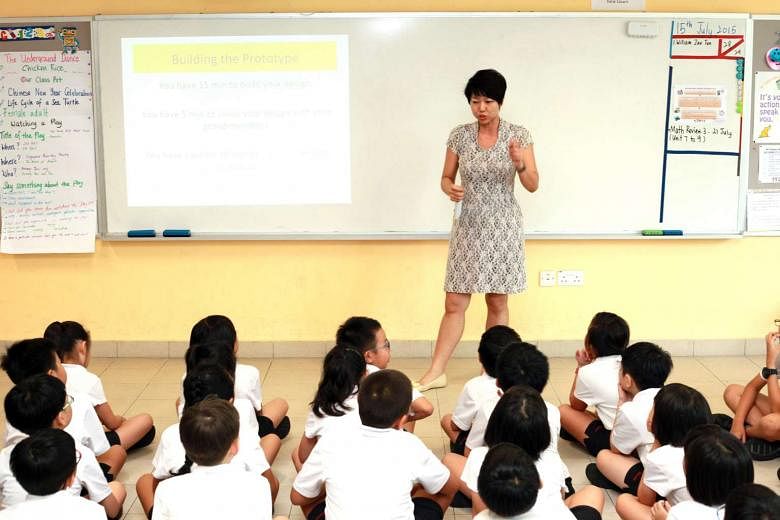SINGAPORE - Imagine a future where each student goes home with a different set of questions for their homework, which are customised to address areas that an individual is weak in.That future could be at our doorstep over the next few years.
Using data analytics technology, teachers can easily sift through their students' strengths and weaknesses, and assign homework based on areas they need more practice in.
This technology will also be able to generate customised worksheets and practice papers for students, such as generating more problems which students are weak at to practice on, or coming up with more challenging questions in topics they are breezing through.
This is one of the many ways technology will be used in the future to transform how people live, learn, work and play in the future as charted out in the Infocomm Media 2025 masterplan, which was revealed on Tuesday.
The plan sets out the direction for Singapore's infocomm and media development through 2025, with an eye on challenges broadly in the areas of productivity growth, creating high-skilled jobs, supporting an ageing population and fostering a cohesive society.
"In education, for example, teachers can make use of data analytics to customise curriculum and pedagogy to match individual abilities and guide us in our continuing learning and training," said Minister for Communications and Information Dr Yaacob Ibrahim at the launch of the plan.
"My Ministry supports the strategic directions and recommendations set out in Infocomm Media 2025. While some ideas will require further study, we are already putting the wheels in motion for others," Dr Yaacob added.
Projects which have started include smart nation trials in Jurong Lake District, where sensors in parks allow for lighting to be adjusted based on the time of the day and motion detection, for instance.
Also being rolled out is an islandwide network of "aggregation gateway boxes" - typically installed at traffic junctions, bus stops and Housing Board void decks. They supply power to surveillance cameras, and traffic or weather sensors, and provide links to the Internet to allow the data collected by the cameras and sensors to be transmitted to the relevant public agencies promptly.
"When deployed in a coordinated manner using our aggregation gateway boxes, the data from these sensors will generate insights that will enable the government to operate holistically and manage the city more effectively," said Dr Yaacob.


